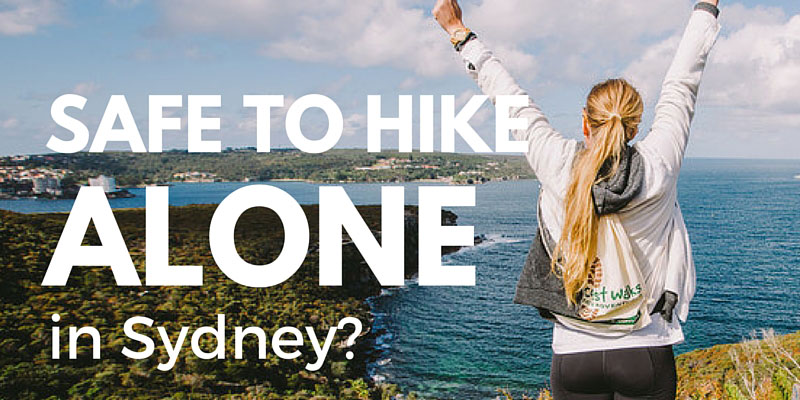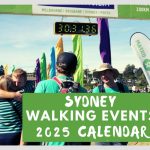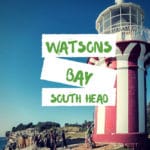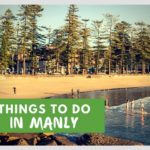There are two types of people who go hiking alone – those chasing the serenity, and those who think they don’t have a choice (but you do… find someone to walk with).
Wherever you fit, here are tips to make your solo hiking trip in Sydney safe and sound.
Is it safe to hike alone in Sydney?
Yes. Generally speaking, Sydney is pretty safe for people who wish to bushwalk alone. But there are a whole bunch of caveats to keep in mind.
Take this with a big pinch of salt, but most tracks are relatively good although not necessarily well sign-posted.
None of Sydney’s national parks are truly remote but some are far less popular and accessible than others. If you have a proper map, getting lost should not be a major problem (let me say that again: if you have a proper map and know how to use it).
Is it also safe for women to walk solo?
Whenever women ask me is it safe to hike in Sydney alone, there’s always an underlying question of the probability of physical or sexual assault.
All I can say is that there are no more incidents reported hiking than any other activity. I can’t recall any news reports specifically related to hiking alone in Sydney.
I’m personally no more or less aware of this vulnerability while bushwalking than any other time I’m alone somewhere without many people around.
What about the Blue Mountains?
Let’s be clear about what is “Sydney”. The Blue Mountains National Park is not included here as being “in Sydney” because it’s 75km away (46 miles) and takes up to two hours to drive there from the city centre, or three hours on the train (not great for a day walk – deserves a full weekend away).
The Blue Mountains is a whole other bushwalking world – one that covers a quarter of a million hectares of land with much of the park remote and difficult to access. It’s home to more than one search and rescue operation every week. (It’s why the police teamed up with land managers to create TREK – Think Before you Trek).
We do not recommend you hike alone in the Blue Mountains.
If you choose to, note that mobile phone reception is so poor in most areas that Blackheath, Katoomba and Springwood police stations can loan hikers a free PLB (Personal Locator Beacon).
I know part of the appeal to hike alone in Sydney is to get away from everything, but with safety your highest priority, choose a track that is fairly well used. You might not see anyone on a weekday, but chances are weekends are busier.
What tracks are best for hiking alone in Sydney?
Some of the more well-used tracks and trails best for hiking alone in Sydney include:
- Spit to Manly
- most tracks in Sydney Harbour National Park, such as Watsons Bay or Bradleys Head and other parts of the Mosman to Balmoral stretch.
- Barrenjoey Headland on Sydney’s northern tip
- the Hornsby area of the Great North Walk (never too far from houses)
- walking along the river section of Lane Cove National Park
- and our favourite, The Coast Track in Royal National Park
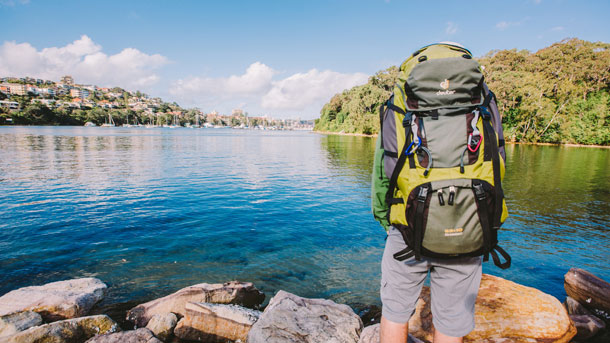
Is there mobile phone reception?
Even though you’re walking within the perimeter of Australia’s largest city, mobile or cell phone reception can still be patchy in bush areas. A lot of the tracks above do NOT have 100% mobile reception along the whole walk, especially in Royal National Park.
Not all telco companies are created equal in terms of reception. Your chosen carrier may determine how reliable reception is. Telstra, or other carriers using Telstra’s network, tend to have the best reception in less populated areas (and are also the most expensive).
Tell someone where you’re going
So don’t only rely on your phone to get you out of trouble. Follow standard bushwalking best practice including telling friends, family (or police) exactly where you’re going with route details, any medical conditions and what supplies/clothing you’ve taken, and most importantly – when to expect you back. Of course, check in with them when you return.
Consider a personal GPS tracking device, like Spot Tracker which gives friends an online link to your physical location.
Unless you’re trying to find a hiking buddy, I have a feeling you may ignore the well-meaning advice to walk in a group of at least three people.
It doesn’t take a big physical injury to stop you walking – a simple sprained ankle can have big consequences – and this way one person stays with the injured walker while the other person gets help.
Something to consider…

